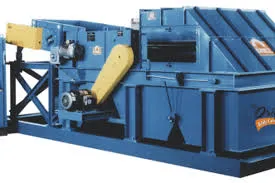

Nov . 22, 2024 18:35 Back to list
Steel Scrap Processing Plant An Essential Component of Sustainable Manufacturing
In today's world, where sustainability and resource conservation have become paramount, steel scrap processing plants play a critical role in the recycling and reuse of one of the most recycled materials on the planet steel. With the construction, automotive, and manufacturing industries producing vast amounts of scrap steel, the need for efficient processing plants has never been greater.
Understanding Steel Scrap
Steel scrap refers to any steel material that is discarded and can no longer be used for its intended purpose. This includes everything from leftover bits in a manufacturing process to decommissioned vehicles and demolished buildings. Steel scrap is categorized into two main types ferrous, which contains iron, and non-ferrous, which does not. The ferrous category is where most of the steel scrap is found, accounting for a significant portion of the recyclable materials collected globally.
The Importance of Steel Scrap Processing
The processing of steel scrap is crucial for several reasons. Firstly, recycling steel saves a considerable amount of energy compared to producing new steel from raw iron ore. According to estimates, producing steel from recycled scrap uses about 74% less energy, highlighting the environmental benefits of recycling practices. Additionally, the recycling process contributes to the reduction of greenhouse gas emissions, helping mitigate climate change impacts.
Secondly, efficient steel scrap processing maximizes the material's lifecycle. Instead of being discarded in landfills, steel scrap is transformed into new products, thus minimizing waste and promoting a circular economy. A significant portion of new steel production worldwide is derived from recycled materials, underscoring the importance of scrap processing plants in the global manufacturing chain.
The Process of Steel Scrap Recycling
Steel scrap processing plants employ a variety of technologies and techniques to turn scrap metal into reusable steel products. The typical processing process includes several key steps

2. Sorting Once collected, the scrap is sorted to remove contaminants and separate ferrous from non-ferrous metals. This can involve manual labor as well as automated processes, utilizing magnets and eddy current separators.
3. Shredding After sorting, the clean scrap is sent to shredders, which break it into smaller, manageable pieces. This not only makes transportation easier but also prepares the material for further processing.
4. Melting The shredded scrap is then melted in electric arc furnaces (EAFs) or induction furnaces, where it reaches temperatures above 1,500 degrees Celsius. In EAFs, arcs of electricity are passed between large electrodes, melting the scrap steel in a highly efficient manner.
5. Refining Following melting, the molten steel undergoes a refining process to remove impurities and adjust the composition, ensuring it meets the necessary specifications for new products.
6. Casting and Rolling Finally, the refined liquid steel is cast into molds and rolled into various shapes, such as sheets, bars, and rods, ready for distribution to manufacturers.
Challenges and Innovations
Despite the inherent advantages of steel scrap processing, the industry faces various challenges. Fluctuating steel prices, competition from low-cost new steel production, and the need for advanced technologies can hinder profitability. However, innovations such as automated sorting technologies, improved melting processes, and the integration of renewable energy sources into operations are paving the way for more efficient and sustainable practices.
Conclusion
Steel scrap processing plants are vital for turning discarded materials into valuable resources, significantly contributing to sustainable manufacturing practices. As industries strive to balance production demands with environmental responsibilities, these facilities will continue to play a crucial role in the economy, supporting the transition toward a circular life cycle for steel. Investing in and enhancing steel scrap processing technologies is not merely a business strategy; it is a step toward a more sustainable and resilient future.
Latest news
Troubleshooting Common Eddy Separator Problems
NewsJul.04,2025
The Role of Metal Recycling Plants in Circular Economy
NewsJul.04,2025
The Impact of Recycling Line Pickers on Waste Management Costs
NewsJul.04,2025
Safety Features Every Metal Shredder Should Have
NewsJul.04,2025
How Industrial Shredders Improve Waste Management Systems
NewsJul.04,2025
How Cable Granulators Contribute to Sustainable Recycling
NewsJul.04,2025